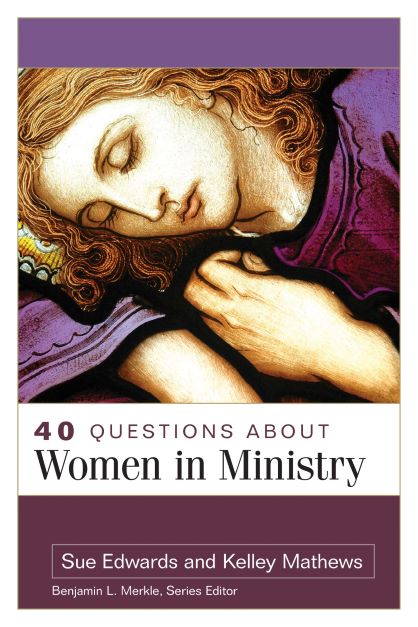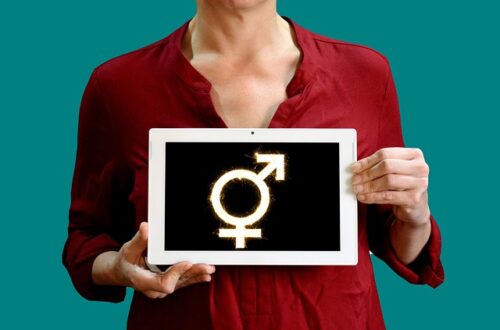
Revisiting the Topic of Women in Public Ministry: My Recommended Resources (2022)
For more than two decades, I’ve taught a course on gender and its ramifications in the church and for women in public ministry. Since #MeToo and #ChurchToo combined with Christian leaders saying women have to endure abuse to be biblical and also that women shouldn’t teach in seminaries, I’ve seen a shift in attitudes. Add to that the one-two punches of Jesus and John Wayne by Kristin Kobes Du Mez with Beth Allison Barr’s book, The Making of Biblical Womanhood: People are revisiting what and why they believe on the topic.
Some have sat up and said, basically, “Evangelicals have barred the front door against radical feminism while leaving the back door wide open to misogyny.” Some have heard Beth Moore told to “Go Home!” and responded with, “Stop already. That misrepresents us.” I’m hearing pastors get up and say, “I was wrong” to slut-shame Bathsheba. I’ve been told by radio hosts, “If I had talked with you a year ago about this, I would have heard you uncharitably, but now. . . .” Something has changed.
Consequently, churches and parachurch organizations are asking for guidance about how to revisit the Bible’s words about topics like women’s silence and being “saved through childbearing.”
Churches are seeing how inconsistent it is to have formulated policy about women without consistently applying their commitment to “God made men and women different by design, so that means we need to partner with them in having dominion.”
Additionally, many are realizing that most debates are taking place within the complementarian camp. Indeed, within this camp, a lot of folks want to distance themselves from traditionalist views of women (e.g., “women are ontologically inferior to men”) and views of women’s public ministry that have women’s lives revolving only around those of men. There is a growing willingness to state outright that woman was made in God’s image; that violence in a marriage is what severs the marriage bond, not the departure of the person seeking safety; that if a sign of the Spirit in Acts 2 includes old and young women prophesying, it cannot somehow violate a grounded-in-creation mandate for a man to learn biblical truth from a woman. Here’s a chart I made with the help of my friend Catherine Arnsperger that shows a spectrum of beliefs within the inerrancy camp, and mostly within the complementarian camp.
I’ve done some consulting on the subject. But my first love is my students. So…. Are you and/or your team wanting to revisit questions about gender in the church? Here are my recommended resources:
While there is no one book I recommend, here are some sources that will help you explore the issue for yourself. I highly recommend doing so in community. Through the years I have noticed that those who do so alone tend to end up in a different place (and not always a good place) from those who do so in community. Books with an asterisk are required reading in the course I teach (some in entirety, some only chapters).
Recommended Books on Women in Public Ministry
HOT OFF THE PRESS: I wrote the foreword for 40 Questions about Women in Ministry (Kregel Academic) by Sue Edwards and Kelley Mathews.
*Winston, George and Dora. Recovering Biblical Ministry by Women. Longwood, Florida: Xulon Press, 2003. 551 pages. Textual considerations. I require the first half of this book, and it’s a game changer for my students in helping them see how to frame the study. George graduated from Dallas Theological Seminary and was president of Belgium Bible Institute years before his retirement. His late wife, Dora, was a missionary in Europe for years and also taught at the institute. Significantly, the Winstons are more global in their thinking about masculinity and femininity/manhood and womanhood than many of the popular sources.
*Bartlett, Andrew. Men and Women in Christ: Fresh Light from the Biblical Texts. London: Society for Promoting Christian Knowledge (SPCK), 2019. 464 pp. Many books approach the subject from a firmly partisan point of view, whether complementarian or egalitarian. Andrew Bartlett makes use of his experience as a judge and arbitrator in assessing the debate with impartiality rather than advocacy (like a barrister). In a thorough but accessible analysis, he engages with exemplars of each view and with all the key biblical texts. He partly agrees and partly disagrees with both sides, and he offers fresh insights into interpretation of the texts.
*Dzubinski, Leanne M. and Anneke H. Stasson. Women in the Mission of the Church: Their Opportunities and Obstacles throughout Christian History. Grand Rapids: Baker Academic, 2021. 238 pp. Many have been taught that women served only behind the scenes in the church for 1,950 years till US feminism came along and wrecked everything. Such a version of history ignores the long history of women in public ministry. Also, this article for many is full of historical surprises.
*Hübner, Jamin. A Case for Female Deacons. Eugene, OR: Wipf and Stock, 2015. 90 pp. Exactly what it says it is. Short, concise.
*McKnight, Scot. The Blue Parakeet, 2nd ed: Rethinking How You Read the Bible. Grand Rapids, Mich.: Zondervan, 2018. 336 pages. McKnight helps readers consider the hermeneutics of culture. How do we know when something is cultural (e.g., slavery) and when it’s timeless? He applies hermeneutics of culture to the debate on women in vocational ministry.
*Piper, John, and Wayne Grudem, eds. Recovering Biblical Manhood and Womanhood: A Response to Evangelical Feminism. Wheaton: Crossway Books, 1991 (re-published with only a new preface in 2006; contents in both editions are identical to the 1991 edition). Many church leaders read this book in seminary and have read nothing since. How these authors frame the debate will raise some eyebrows after reading Winstons.
*Pierce, Ronald W., Cynthia Long Westfall and Christa McKirland. Discovering Biblical Equality. Downers Grove, IL: InterVarsity Press, 2021. 3rd ed, 698 pp. Egalitarian scholars provide alternative interpretations than those presented in Piper/Grudem’s Recovering Biblical Manhood and Womanhood. This is a big, fat book that presents egalitarianism from the perspective of contributors who hold to inerrancy.
*Sayers, Dorothy L. Are Women Human? Grand Rapids: William B. Eerdmans Publishing Co., 2005. From a speech given in 1938. 69 pp. Sayers’s observations about sexism predate the Women’s Movement.
*Witt, William G. Icons of Christ: A Biblical and Systematic Theology for Women’s Ordination. Waco: Baylor University Press, 2020. 447 pp. Witt makes a biblical and theological case for the ordination of women to the ministerial office of Word and Sacrament. He argues that both sides of the debate about women’s ordination embrace new theological positions in response to cultural changes of the modern era. Witt touches on issues such as theological hermeneutics, relationships between men and women, Christology and discipleship, and the role of ordained clergy in leading the church in worship.
*Cohick, Lynn. Women in the World of the Earliest Christians. If you think the women with shaved heads referenced in 1 Cor. 11 were prostitutes, or that the Samaritan woman at the well was immoral, you’re overdue an update. Lynn Cohick knows her stuff.
*Chapter on “head” in Sumner, Sarah. Men and Women in the Church: Building Consensus on Christian Leadership. Seriously, Sumner’s chapter on what “head” means in Ephesians 5 is outstanding. It’s a metaphor. Efforts to substitute the metaphor have given us either “authority” or “source” as literal equivalents. And in doing so, we’ve destroyed the metaphor and missed the point.
For 1 Timothy 2, I give my students my two academic articles on Artemis. I did my dissertation on that one. See links below to summary posts of the content. My forthcoming book, Nobody’s Mother with IVP Academic explores the goddess’s identity and the ramifications for Paul’s writings.
I require the *chapter on eschatology in Paul and Gender by Cynthia Westfall. She and I disagree about what is happening with head coverings in 1 Corinthians 11. But her chapter on women and the kingdom (eschatology) is worth the price of the book.
Meanwhile, for the past fifteen+ years, I’ve been writing on these issues right here on bible.org. I’m including below an index with links to all the relevant blog posts I could find. Some churches have preferred to use these because, well, shorter than that book list I just dropped above.
Godspeed!
My Blog Posts on Women in Public Ministry
Church History: What Do We Learn from Women in Public Ministry? (Hint: Women have been more present than most of us thought.)
Do males image God more than females?
Male and Female in God’s Design
Video: Sexuality and Faith: Male and Female in God’s Good Design
Foundations: What is biblical womanhood?
What Does It Mean that Woman is “Helper” (Ezer)?
Does Genesis Command a Man (not a Woman) to Leave Parents?
Women rule (have dominion)
Are women worth less than men?
What Does Genesis 6 Have to Do with Healthy Male/Female Relationships?
Is it unfeminine to be strong?
Nine steps to biblical manhood/womanhood
God as Male and Female: Metaphor and Simile
What’s a man card got to do with it?
Was Abigail right to go behind Nabal’s back?
Did Jesus Have Women Disciples? and Other Questions
Mary Magdalene: Mary from Magdala or Mary Tower?
Gender and Jesus: Scripture Over Stereotype
“Act like men”: What does Paul mean?
Seven views on the role of women w/in the inerrancy camp
Complementarians on women in ministry: diverse images
What’s the main difference between complementarian and egalitarian?
Interview w/ Eugene Peterson women in church
The Bible: Women Are More Present Than You Might Think
What the presence of women prophets in the Bible tells us
Can Women Speak for God in Mixed-Sex Groups?
“She was a pretty good prophet…for a woman”
Proverbs 31: The Most Hated Woman in the Bible
Can a woman be a seminary professor?
Women and Theological Education: Capitulating to Culture or Historically Rooted?
Women and submission in the workplace
Staying home with kids vs. marketplace work
1 Cor. 11 – Who were the women with shaved heads?
1 Corinthians 14: Are Women Really Supposed to be Silent in Church?
Does Paul really think women are gossips and busybodies?
Ephesians 5: Paul and His Subversive Passage on the Family
1 Peter 3: Weak and weaker vessels
Why Peter today would not want a wife to call her husband “lord”
Is Peter insulting women? Part 1
Is Peter insulting women? Part 2
“Not with braided hair or pearls”
What does “workers at home” really mean?
Are the Women in 1 Timothy Leaders, Needers, or Both?
1 Timothy 2: Who Was Artemis & Why Does It Matter, Part 1
1 Timothy 2: Who Was Artemis & Why Does it Matter Part 2
1 Timothy 2: Do Women Have to Be Quiet?
Bible Backgrounds: Read Some NT Books with the Artemis Cult in View
Paul, Artemis, Ephesus, and 1 Timothy
History: Reintroducing Five Women
Meet Some Female Martyrs of the Early Church
Lost in (Bible) Translation: Are Women Really Missing?
Why Don’t We See More Women in the Biblical Text?
The Bible: Women Are More Present than We Might Think
Four Books to Put on Your Reading List re. Gender and Ministry
Bible Backgrounds: When Is It Legit to Appeal to Them?
The Bent-Over Woman Jesus Healed
Acsah: A Lesser-Known Woman of the Bible
Vindicating Vixens: What about Michel, Wife of David?
The Most Woman-Friendly Book in the Hebrew Bible
Fight Toxic Masculinity (Vs. Thinking All Masculinity is Toxic)
Church History: What Do We Learn about Women in Public Ministry




